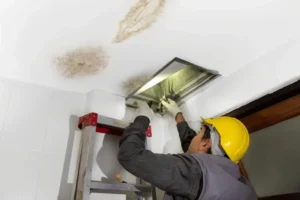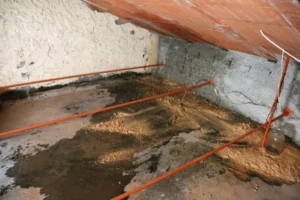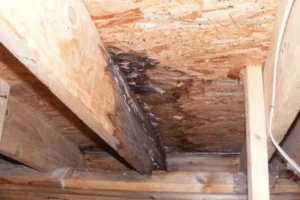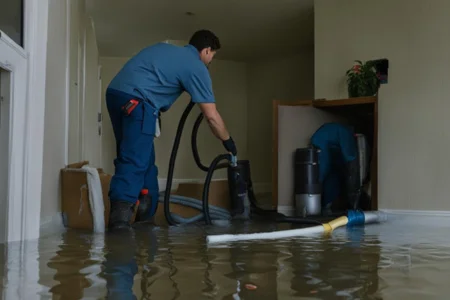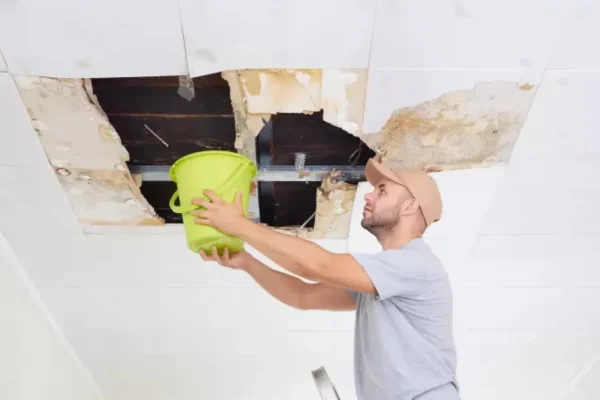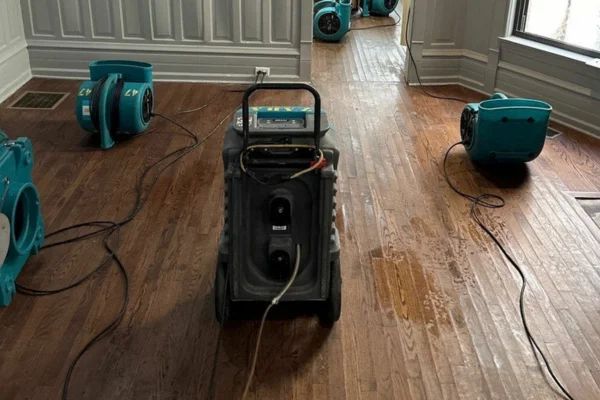Water damage attic problems might not be immediately obvious, but the longer it’s left unchecked, the worse it gets. From hidden leaks and soaked insulation to toxic mold and weakened roof beams, the damage can quietly threaten the structure and safety of your home. In this guide, we’ll help you recognize early signs, understand the risks, and take the right steps to repair and prevent further issues.
Why Water Damage in the Attic Shouldn’t Be Ignored
Ignoring water damage in your attic can lead to serious risks for your home’s structure. If you want to protect your investment, addressing this issue promptly is vital.
Understanding the Risks of Attic Water Damage
Ignoring attic water damage can lead to costly repairs and health hazards. Moisture fosters mold growth, weakening structural integrity. Water stains and damp insulation signal a leak requiring prompt attention. Delayed repairs heighten risks like electrical hazards and wood rot. Routine attic inspections help catch problems early, ensuring a safe, dry living space.
How Water Damage in the Attic Can Affect Your Home’s Structure
Attic water damage compromises your home’s stability by weakening beams and insulation. Mold growth further deteriorates materials, creating health risks. Over time, unchecked moisture can lead to expensive repairs or even roof collapse. Pests often invade water-damaged areas, worsening the situation. Address leaks quickly to maintain a strong home foundation and a safe environment for your family.
Common Causes of Water Damage in the Attic
Water damage often results from unnoticed leaks, poor ventilation, or damaged insulation. Roof leak detection is crucial in preventing mold growth and structural issues, ensuring a safe, dry home.
Leaky Roofs and Shingles
Cracked or missing shingles and faulty flashing allow water to seep into the attic, especially during heavy rain. These issues often lead to attic water damage. Regular roof inspections and quick repairs prevent costly structural problems and help keep your house dry and secure.
Faulty Insulation or Ventilation
Poor insulation and ventilation trap humid air, causing condensation and water damage. This leads to mold growth and weakened attic structures. Musty smells and damp insulation are warning signs. Proper airflow and insulation prevent damage, ensuring a healthy attic and reducing long-term repair costs.
Condensation Issues in the Attic
When warm air hits cold surfaces, condensation forms, leading to mold, rot, and water damage. Poor ventilation worsens the issue. Watch for water droplets on rafters and insulation. Dehumidifiers and improved airflow help manage moisture, preventing structural damage and costly repairs.
Broken Pipes or Plumbing Leaks
Leaks from old or poorly installed attic pipes can lead to major water damage. Damp spots on ceilings or walls may signal hidden issues. Shut off the water and call a plumber immediately. Fast action helps prevent mold, wood decay, and expensive restoration.
Ice Dams and Their Effect on Attic Spaces
Ice dams form when melted snow refreezes, causing water to back up into the attic. Poor insulation and ventilation make it worse. Damage affects rafters, insulation, and ceilings. Clearing snow and regulating attic temperature helps prevent structural decay and moisture-related problems.
How to Identify Water Damage in the Attic
Spotting attic water damage early can save you from costly repairs. Look for warning signs like discoloration, musty odors, damp insulation, and signs of water damage under tile. These indicators often point to hidden moisture issues.
Signs of Water Damage in the Attic: What to Look For
Water damage can lead to costly repairs and health risks. Identifying the signs early can help prevent severe issues. Here’s what to check for:
- Water stains: Yellow or brown patches on ceilings or walls indicate leaks.
- Mold or mildew: These thrive in damp conditions and can cause health problems.
- Musty odors: Unpleasant smells suggest hidden moisture issues.
- Wet or sagging insulation: Compromised insulation loses its effectiveness.
- Warped or sagging rafters: Structural damage from water intrusion may weaken attic support.
Inspecting Attic Insulation and Rafters for Moisture
Regularly checking insulation and rafters helps catch early signs of water damage attic problems. Look for damp spots, stains, or sagging insulation, especially near vents and chimneys. A moisture meter can reveal hidden issues. Early detection prevents mold and structural damage, helping you avoid costly repairs and maintain a safe, dry attic.
The Importance of Checking for Mold or Mildew
Mold and mildew in the attic can threaten your health and home. Watch for musty smells, stains on wood, and discolored insulation—these are signs of hidden moisture. Quick removal and better ventilation can stop the spread. Preventing mold growth keeps your attic safe, clean, and free from long-term structural and air quality issues.
What to Do When You Find Water Damage in the Attic
Discovering water damage requires quick action to prevent costly repairs. Let’s explore the immediate steps you should take to address the situation effectively.
Immediate Steps to Take for Safety and Damage Control
Water damage attic situations require quick thinking to prevent further harm. Prioritize your safety and take control with the following steps:
- Turn Off Electricity: Shut off the power to avoid electrical hazards.
- Evacuate if Necessary: Leave the area if there’s visible structural damage.
- Wear Protective Gear: Use gloves and a mask to avoid contact with contaminants.
- Identify the Water Source: Look for roof leaks or pipe issues.
- Document the Damage: Take clear photos for your insurance claim.
- Avoid Using Electronics: Don’t use a wet vacuum until it’s safe.
- Contact a Professional: Call in help for assessment and repair.
How to Dry Out Water-Damaged Areas in the Attic
Dealing promptly with water damage problems helps protect your home from further deterioration. Follow these essential steps to dry out the space effectively:
- Remove wet materials: Discard soaked insulation, wood, and other absorbent items. Use high-powered fans: Improve airflow to accelerate drying.
- Run a dehumidifier: Reduce humidity to prevent lingering moisture.
- Open windows if possible: Allow fresh air to circulate.
- Vacuum standing water: Use a wet/dry vacuum only when safe.
- Inspect for leaks: Identify and fix the source of water.
- Monitor humidity levels: Check moisture levels until dry.
- Call a professional if needed: Extensive damage may require expert help.
How to Remove Mold or Mildew Caused by Water Damage
When water damage attic problems result in mold or mildew, quick action is key to preventing further spread and protecting your home. Here’s what to do:
- Wear protective gear: Use gloves, a mask, and eye protection.
- Locate affected areas: Check insulation, wood beams, and corners for mold.
- Clean thoroughly: Scrub surfaces with water and mild detergent.
- Use a bleach solution if needed: One cup of bleach per gallon of water—never mix bleach with ammonia.
- Dry the area completely: Use fans and dehumidifiers.
- Fix water sources: Repair leaks to prevent recurrence.
- Apply mold-resistant sealants: Prevent future growth.
How to Prevent Future Water Damage in the Attic
To keep your attic safe from future water damage, you’ll need to focus on a few key areas. Regular roof inspections will help you catch potential issues before they turn into costly repairs.
The Role of Proper Insulation and Ventilation
Proper insulation and ventilation are key to preventing future moisture problems. Insulation helps regulate temperature and reduce condensation, minimizing the risk of mold. Ventilation allows moist air to escape, preventing buildup. Confirm both systems are functioning properly and check regularly for blockages or damage to maintain a healthy attic environment.
Sealing Leaks and Cracks to Protect Your Attic
Inspect for leaks around vents, pipes, and seams. Use caulk or sealant to close any visible gaps, especially where the roof meets walls. Weatherstripping doors can further help. Sealing these areas tightens your attic against water intrusion, reducing the need for water damage repair and helping prevent mold and structural issues.
Regular Roof Inspections and Maintenance
Check your roof twice a year for damaged shingles, rusted flashing, or signs of wear. Clear gutters and downspouts to prevent water buildup. Early detection of roof issues can stop leaks before they start. Consider a professional inspection if unsure—routine maintenance helps protect both your attic and the rest of your home.
Preventing Ice Dams and Snow Melt Issues
To prevent ice dams, ensure your attic has proper insulation and ventilation to keep roof temperatures stable. Clear gutters to allow snowmelt to drain properly. Use roof rakes after heavy snowfall and consider installing heat cables at the roof’s edge. These precautions help stop water from seeping into your house during winter.
The Benefits of Professional Attic Water Damage Restoration
When you face water damage in your attic, knowing when to call a professional can make all the difference.
When to Call a Water Damage Expert
Attic water damage can escalate quickly if not handled properly. If you notice standing water, ongoing leaks, or signs of mold, it’s best to call a professional. Experts have the tools and experience to assess hidden damage, locate the source, and recommend proper repairs.
If you’re unsure how to proceed or lack the equipment to address the issue safely, don’t take risks. Repair handled by a qualified specialist can save your home from costly long-term problems.
The Restoration Process: What Professionals Do
When repairing attic water damage, professionals follow a detailed, step-by-step approach to ensure complete restoration:
- Assess the Damage: They begin by inspecting the attic and identifying the water source.
- Extract Water and Moisture: Using specialized equipment, they remove standing water and hidden moisture.
- Dry the Area Thoroughly: Fans and dehumidifiers dry out wood, insulation, and other materials.
- Clean and Sanitize: Contaminated areas are disinfected to prevent mold and bacteria growth.
- Provide a Restoration Report: A full report outlines the work done and next steps for repairs.
Why Timely Water Damage Repair Can Save You Money
Quick attic water damage repair helps prevent mold, structural issues, and rising costs. Acting fast protects your home’s integrity, keeps insurance premiums manageable, and can even save personal belongings. Professionals ensure proper cleanup and repairs, avoiding future complications. The sooner you respond, the more damage—and money—you can avoid in the long run.
Conclusion
To sum up, addressing water damage in your attic is essential to maintaining your home’s integrity and preventing costly repairs down the line. By staying vigilant and taking proactive measures, you can minimize the risks. Remember to act quickly if you discover any signs of moisture, and don’t hesitate to call in professionals for thorough assessments and restoration.
Prevent water damage from escalating! Reach out for professional advice and immediate restoration services to protect your attic and home.
Frequently Asked Questions
Can I Repair Attic Water Damage Myself?
How Long Does It Take to Dry Out an Attic?
Will Homeowners Insurance Cover Attic Water Damage?
What Signs Indicate Mold Growth After Water Damage?
How Can I Improve Attic Ventilation to Prevent Water Issues?


